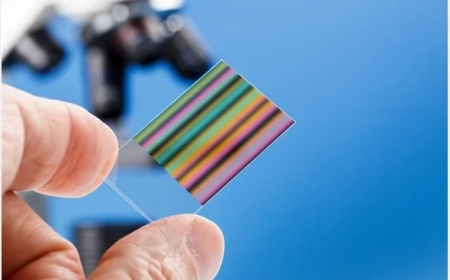Antibiotic Tablet for Dog Wounds: A Guide for Pet Owners

When your dog suffers from a wound, prompt care and treatment are essential to prevent infection and promote healing. Just like humans, dogs are prone to cuts, scrapes, bites, and other injuries that may require medical attention. One of the most common treatments recommended by veterinarians is an antibiotic tablet for dog wounds. This article offers a comprehensive guide to understanding when and why antibiotics are needed, which options are commonly used, and how to care for your furry friend safely.
Understanding Dog Wounds
Dogs can sustain wounds from various sources, including:
-
Fights with other animals
-
Scratches or cuts from sharp objects
-
Insect bites or stings
-
Post-surgical wounds
-
Accidental injuries during play or outdoor adventures
While minor wounds can often heal on their own, deeper or infected wounds may require medical intervention, including antibiotics, to prevent complications.
Why Antibiotic Tablets Are Important for Dog Wounds
Wounds in dogs are susceptible to bacterial infections, especially if left untreated. Bacteria can multiply rapidly in open cuts, leading to:
-
Swelling
-
Redness
-
Pus or discharge
-
Pain and discomfort
-
Fever in severe cases
An antibiotic tablet for dog wounds helps by:
-
Killing harmful bacteria
-
Preventing infection from spreading
-
Supporting the body's natural healing process
-
Reducing inflammation and discomfort
Commonly Prescribed Antibiotic Tablets for Dog Wounds
Veterinarians may prescribe different types of antibiotics depending on the nature and severity of the wound. Common options include:
-
Amoxicillin
A broad-spectrum antibiotic that is effective against many types of bacterial infections. It is often prescribed for skin wounds and infections. -
Clindamycin
Useful for deep tissue infections and wounds involving bones or joints. Clindamycin is commonly used for abscesses and dental infections as well. -
Cephalexin
A widely prescribed antibiotic for skin infections, open wounds, and abscesses. It is generally safe for most dogs. -
Enrofloxacin (Baytril)
Used for more severe infections or when bacteria show resistance to other antibiotics. -
Metronidazole
Sometimes prescribed if the wound involves anaerobic bacteria or deep tissue infections.
How Antibiotic Tablets Are Administered
-
Dosage: The correct dosage depends on your dogs weight, age, and the severity of the wound. Never give human antibiotics without veterinary guidance.
-
Duration: Antibiotic courses typically last from 7 to 14 days but must be completed fully even if the wound appears healed early.
-
Monitoring: Watch for side effects such as vomiting, diarrhea, or allergic reactions.
It is crucial to follow the veterinarian's instructions precisely to ensure effectiveness and prevent antibiotic resistance.
Home Care Tips for Dog Wounds
Along with giving the prescribed antibiotic tablet for dog wounds, proper wound care at home is essential:
-
Clean the Wound: Use a saline solution or mild antiseptic prescribed by the vet.
-
Apply Topical Medication: In some cases, your vet may also prescribe an antibiotic ointment.
-
Prevent Licking: Use an Elizabethan collar (cone) to stop your dog from licking or biting the wound.
-
Monitor Healing: Check daily for signs of improvement or any worsening of the condition.
When to See a Veterinarian
Not all wounds require antibiotics. However, you should always consult a veterinarian if:
-
The wound is deep or bleeding excessively.
-
There are signs of infection (pus, odor, heat, swelling).
-
Your dog is lethargic or in visible pain.
-
The wound isnt healing after a few days of home care.
A professional evaluation will determine whether an antibiotic tablet for dog wounds is necessary and safe.
Potential Side Effects of Antibiotic Tablets
While antibiotics are generally safe, they may cause side effects in some dogs:
-
Gastrointestinal upset (vomiting, diarrhea)
-
Allergic reactions such as itching or swelling
-
Changes in appetite or behavior
Always inform your veterinarian if your dog has any known allergies or previous reactions to medications.
Natural Alternatives and Supplements
Some pet owners explore natural remedies to support healing, such as:
-
Honey-based wound dressings
-
Omega-3 supplements for skin health
-
Probiotics to support gut health during antibiotic use
However, these should never replace prescribed antibiotic tablets for dog wounds in cases of bacterial infection.
Preventing Future Wounds and Infections
While accidents happen, you can take preventive steps to protect your dog:
-
Supervise outdoor play, especially in rough terrains.
-
Keep your dog away from aggressive animals.
-
Maintain up-to-date vaccinations.
-
Regularly inspect your dogs skin, especially after outdoor activities.
Conclusion
Using the right antibiotic tablet for dog wounds is vital in ensuring your pet recovers quickly and avoids complications from bacterial infections. Timely veterinary care, proper wound management, and responsible use of antibiotics can make a significant difference in your dog's healing process. Remember, never administer antibiotics without professional advice, and always follow your vets instructions for the health and safety of your furry companion.




































